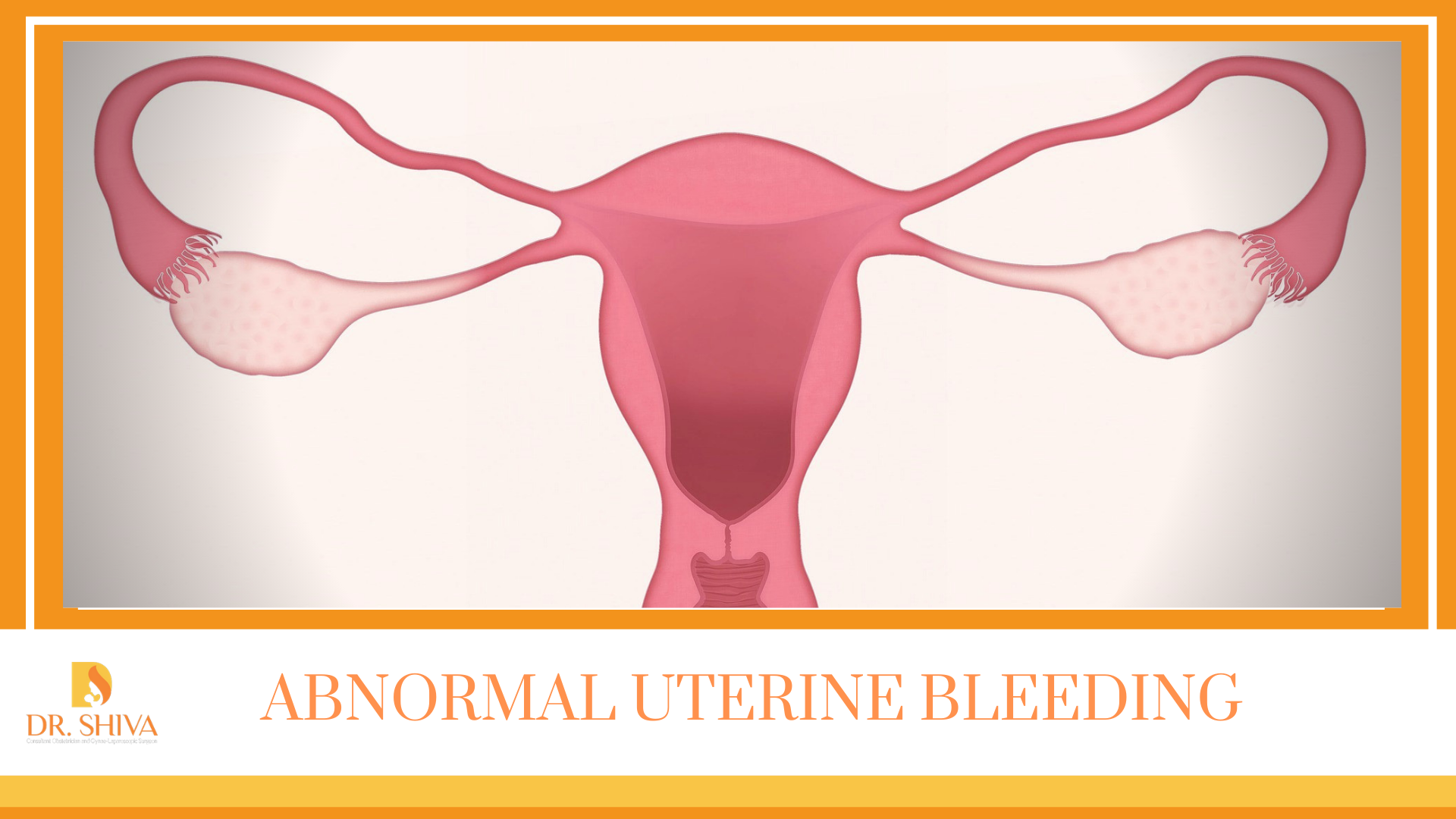
Abnormal uterine bleeding (AUB) is excessive or unusual bleeding from the uterus which may last longer than usual and can occur at an irregular time. Normal menstrual flow lasts for usually five days and occurs every 21 to 35 days.
When going for a consultation regarding AUD, one can come across the following questions from the doctor,ie, ‘Is your period regular and its frequency? Is your bleeding heavy/medium/light/spotting? How long does your period last? Is there spotting between periods? Do you have bleeding after sex?’ Hence it is necessary to always keep track of your menstrual cycle before your visit. Also do keep note of the duration and type of bleeding.
Symptoms
- Bleeding or spotting at unusual times i.e., between periods, after sex, during menopause
- Menorrhagia – Having very heavy bleeding during your period and/or bleeding that is unusually long or “Irregular” periods in which cycle length varies by more than 7–9 days can also be considered abnormal uterine bleeding.
- Inconsistent menstrual cycles – Menstrual cycles that are longer than 38 days or shorter than 24 days
What are the causes for abnormal uterine bleeding?
- In most cases, AUB is caused by a hormone imbalance or hormonal changes. This is more common in teenagers or in women who are approaching or are in menopause. Hormonal changes are common in woman who are going into or are in menopause. Due to this the endometrium can thicken and cause bleeding or abnormal menstrual cycles in terms of the duration and how heavy it is. Women who have reached menopause should consider any form of uterine bleeding as a serious issue and consult a doctor. When hormones are the cause of AUB it is known as dysfunctional uterine bleeding or DUB.
- Uterine Fibroids (non-cancerous growths of muscle in the uterus) or Uterine Polyps (non-cancerous growths on the lining of the uterus and cervix)
- Rarely, a thyroid problem or infection of the cervix
- Precancerous and cancers of the uterus.
- Bleeding disorders – Some patients need to use blood thinners for anticoagulation (these reduce the risk of blood clots) which can be a factor for abnormal bleeding.
- Polycystic ovary syndrome – This condition can cause irregular or no periods at all. Hormone imbalance causes PCOS.
- Severe weight gain/loss- Excessive weight gain or loss (more than 10 pounds or 4.5 kilograms)
- Platelet dysfunction
- Early pregnancy
- Hormonal birth control – birth control pills or intrauterine devices (IUD)
Diagnosis for abnormal uterine bleeding
Your health care professional will ask you details on your health history and menstrual cycle, so it is important to keep track of all info related to your menstrual cycle such as the dates, length, and type of bleeding. The tests the doctor prescribes is broadly dependent on your age. If there is a chance for you to be pregnant the doctor may order one pregnancy test.
- Endometrial biopsy – This is a test a sample of the endometrium is taken and is send for testing. The test will help determine if there a change in the cells or if it is cancerous or not.
- Blood test – These tests check if your hormones are out of balance or if you have a blood disorder or chronic disease. Bleeding heavily could have caused a shortage of iron in your body. A blood test also helps to identify this.
- Ultrasound exam – An ultrasound exam of your pelvic area using sound waves to make images of the inside of your uterus shows both the uterus and the ovaries so your doctor can look for fibroids or polyps
- Hysteroscopy – A thin, tiny lighted scope is inserted into your uterus of the through your cervix. It lets your ob-gyn see the inside of your uterus.
- Sonohysterography – This is a procedure where fluid is inserted into the uterus through a tube and ultrasound images of the uterine lining is taken.
- Computed tomography (CT) – In this procedure, X-ray is taken from different angles to get cross-sectional images of the internal section of the uterus.
- Magnetic resonance imaging (MRI) – This uses a strong magnetic field and sound waves to create detailed images of the uterus. It is not used commonly but can help spot adenomyosis.
How can abnormal uterine bleeding be treated or managed?
The treatment will be based on your age, cause of bleeding and if you are planning to get pregnant in the future. A doctor will help you determine which is the best treatment for you.
- Intrauterine device (IUD) – It is a small T shaped plastic device placed in the uterus in order to prevent pregnancy. A certain type of IUD releases hormones which can significantly reduce abnormal bleeding. But sometimes IUDs may cause abnormal bleeding. If that happens the doctor must be informed immediately.
- Hormonal birth control methods – Birth control pills and other hormone treatments may be able to lighten menstrual flow and help make periods more regular. The birth control pills contain hormones that can stop the lining of the uterus from getting too thick.
- D&C (dilatation and curettage) – This procedure is done only if found necessary. If you’re having heavy bleeding, D&C may be performed to both to find out the problem and to treat the bleeding. The D&C itself often makes heavy bleeding stop.
- Hysterectomy – It is the surgical removal of the uterus and you won’t have any more periods and will not be able to get pregnant. If your fibroids are very large or if you have been diagnosed with endometrial or uterine cancer you may need a hysterectomy. This is considered as the last resort when other measures were not successful.
- Endometrial ablation – It is a procedure that will destroy the lining of the uterus surgically. Endometrial ablation may stop or reduce the menstrual bleeding. Pregnancy is not likely after ablation, but if it happens, the risk of serious complications, like life-threatening bleeding, is greatly increased.
- Myomectomy or uterine artery embolization – Both procedures are used to treat fibroids. In myomectomy, the fibroid is removed and in Uterine artery embolization it blocks the blood vessels to the uterus, which in turn stops the blood flow that fibroids need to grow.
For more details, kindly contact us.

